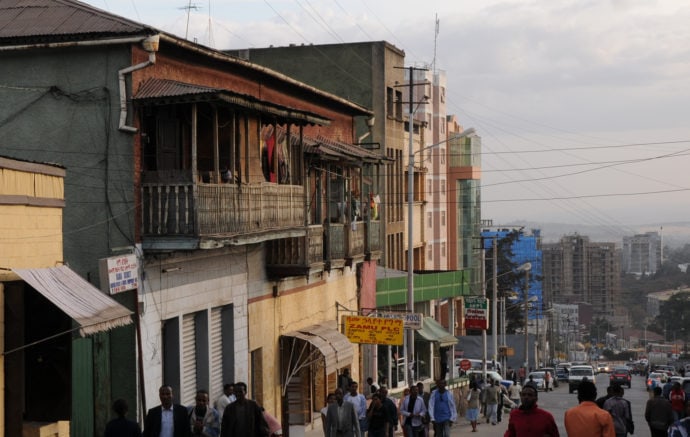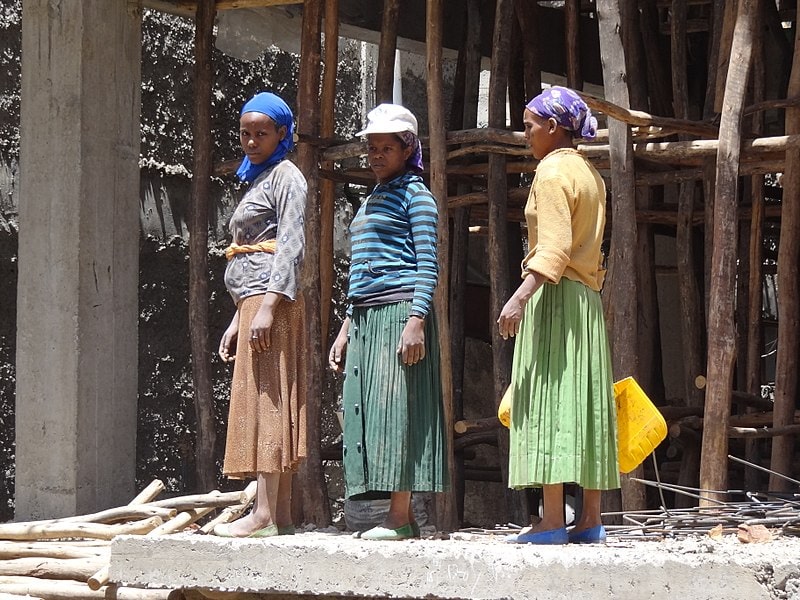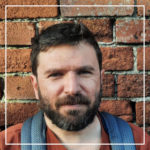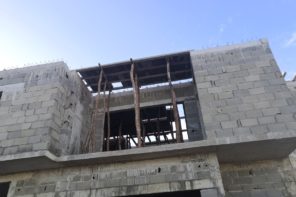In search of urban heresies
Wherever I glanced around Solomon’s office, I saw, plastered on the walls and spread over the desk, maps, reports, designs of buildings that had been, or soon would be, completed. Solomon Kebedde is a well-known academic and respected architect, and a leading voice in the debate on the need to rethink urban planning and architecture practice as a way of harnessing the social, cultural and historical fabric of Ethiopian cities.
Over the fifteen years I have known him, Solomon would always brilliantly point out the tensions in the way Addis Ababa, the capital of Ethiopia, was developing: the threat to the inner city to make room for high-rise construction, the fascination of business elites with glass-and-steel architecture, and the ways the rising costs of land, homes, and property are making the city less accessible to the many.
Worryingly, this is a common urban story.
In Ethiopia as elsewhere, city and national governments give out land in the hope of attracting investments and replenishing the city coffers. Developers and contractors bet on incremental growth to sustain their continuous quests for the next sale. Architects and urban planners embrace the belief that building will trickle down to produce social and economic inclusion. Experts sell urban densification, large-scale infrastructure, and the formalisation of the informal economy as panaceas for sustainable urban development.
Meanwhile, urban dwellers suffer. The very right of poor communities to live in strategic locations in the city is questioned through evictions. The building of new housing, including “affordable housing”, fails to provide shelter to the urban poor or when traps them in a vicious cycle of indebtedness. Building brings employment, yet contractors’ profit margins are often squeezed out of low wages and precarious labour conditions.
More than ever, we need a paradigm shift in the ways we imagine the future of cities. Established recipes for boosting urban change and development, from densification to economic specialisation to boosting large-scale infrastructure, have failed to make cities more sustainable or just. If we want to make cities just, we need to turn established orders of priority and urgency around.
More than ever, we need a paradigm shift in the ways we imagine the future of cities.
As Solomon saw it, it is difficult to blame any one person or group for the deepening of injustice in cities, because we are all responsible, especially those in positions of privilege.
We are all in together. Blame lies in the pressure that the government exerts to seize a moment of economic growth and deliver change. It lies in the economic interests and architectural aspirations of businesspeople. It lies in the concern of domestic and international contractors with limiting cost and delivering on schedule. It relates to the kind of construction materials available. And blame lies in the attempts of architects to get their time’s worth when the fees they receive, especially from private clients, are not commensurate to the work needed to produce a feasible and detailed plan.
The collective responsibility for the status quo does not mean that we are individually absolved for not taking action to challenge injustice in cities. When responsibilities are shared, individual actions can make the difference.
Certainly, it is not easy to take action when the existing condition is perpetuated and enforced as desirable, necessary, and inevitable. As philosopher Jacques Derrida put it, taking action is a heresy, a willing act of rupture with is considered inevitable.
Perhaps what our cities need is a heretic politics.
Urban heretics
In Addis Ababa, the heretics are everywhere.
An architecture of the tabula rasa justifies evictions and dispossessions. It disrupts the urban fabric, creating a city devoid of the sociality that makes it thrive and on which the urban poor rely to get by.
Solomon was himself a heretic. At heart, though, he was a pragmatist. As he saw it, development will occur; it is the how that makes the difference. The problem was that planners, architects and government officials saw Addis Ababa as a tabula rasa on which they could inscribe their visions of a city of the future. This approach is destructive and disruptive, he told me over and over through the years I knew him. An architecture of the tabula rasa justifies evictions and dispossessions. It disrupts the urban fabric, creating a city devoid of the sociality that makes it thrive and on which the urban poor rely to get by. Architects had to fight back, and with urgency, he believed. What they could do was to “slow down” development to allow room for negotiation and to advocate for a shift in government priorities.
He was not alone. Emebet and Samuel also searched for alternatives.
“Everybody blames us,” Emebet said, sipping a coffee in a café near her office. “When someone asks me ‘what do you do for living?’ I just keep quiet. [I say] ‘Yeah… I just work minamen [whatever]’, because the minute I say I am an architect, people start shouting at you.”
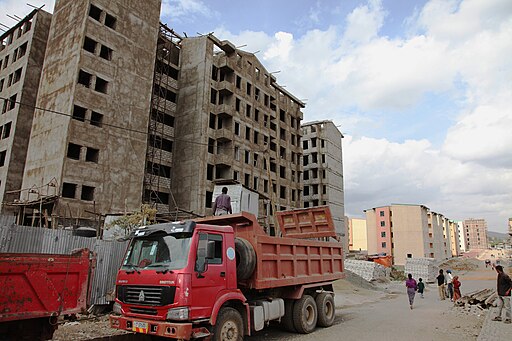
New homes and residences are being built around Ethiopia’s capital, Addis Ababa. By DFID – UK Department for International Development, courtesy of Wikimedia Commons.
Emebet embodied architecture’s commitment to quality design, and she was known well beyond Ethiopia as a critical voice on this matter. Because of her status in the profession, Emebet’s clients listened to her and respected her advice, and developed projects she could identify with. Yet, she was aware that quality design was something for rich and powerful clients, and it was not enough by itself to make an impactful change in the lives of ordinary residents. Over the years I knew her, Emebet constantly sought to expand quality design beyond its elite focus. She worked pro bono on projects such as schools, hospitals, and the development of green areas. “We have three, four projects like that,” she told me in 2016, the first time I met her. Her firm needed to take in a lot more projects to sustain their pro bono engagements, but it was worth it: “you know I have a good life, I can do that. This is my way of giving back to society.”
Architecture has betrayed and ignored both nature and society. Architecture has lost meaning to me.
Samuel went further. I first met him at a conference in 2016 where he spoke to an audience of students, architects, government officials and invited speakers from the United States and Europe. He told them, “architecture has betrayed and ignored both nature and society. Architecture has lost meaning to me.”
For him, responsibility was fundamentally about answering the question of what urban development is for and for whom. If we accept that the priority of development is roads, we limit the beneficiaries of design to those who can afford a car. If those who get to enjoy a well-designed building are those who live in it or can afford to shop in it, exclusion is not addressed.
It was not just architects who talked heresies. Construction workers also did.
Mr Girma was the chairman of the federation of construction workers’ unions. His was not an easy job, he told me again and again. Unions could not do much to challenge working conditions on a wider political and policy level. For years they had tried to push for a national construction workers’ agreement, but regulating work conditions did not seem to be on the government agenda. What unions could do, he often said, was to promote agreements within companies and hope management would follow through, or assist workers when they were fired for making demands. Mr Girma filed court cases when companies fired workers without following the rules. He stepped in to ensure that labour laws were respected.
When I met him in 2016, Mr Girma claimed a 75 percent success rate in court, but this concealed a fundamental predicament. Firstly, labour cases could take two or three years to be resolved, by which time workers might have already moved on to work in similar conditions elsewhere. For this reason, workers were often unwilling to start a lengthy litigation process. The only advantage was the hope of cashing in, if successful, on whatever compensation the company agreed to pay. Secondly, the union’s emphasis on judicial and legal work reflected how workers’ demands could do little to challenge workings conditions and question government and corporate practices.
In fact, while labour unions might win in court and companies might pay compensation, the latter’s modi operandi continued unchallenged. After all, tens of thousands of birr in compensation to a handful of workers when laws were breached was nothing compared to the multi-billion-birr budgets of top-tier companies.
Yet, construction workers keep fighting, struggling, demanding.
Jemal, a 65-year-old carpenter, had worked in construction for at least four decades. When I first met him in 2017, he was leading a wildcat strike on a road construction site. He told me, “working is necessary, but also asking [for better conditions] is necessary. If you work, you should ask!” “Our rights should be respected!” he concluded.
Permanent provocations
While I was doing research in Addis Ababa, a major political change happened: the collapse of a regime that had ruled the country uncontested for 28 years. Between 1991 and 2019, the Ethiopian People’s Revolutionary Democratic Front (EPRDF), a coalition of ethnic and regional parties led by the Tigray People’s Liberation Front (TPLF), governed the country, combining a commitment to development with a pervasive apparatus of political control and repression.
Under the impact of EPRDF’s policies, Ethiopia’s economy grew, becoming a paradigmatic African success story.
While the economy grew, discontent spread.
After Arat Kilo, part of the old city centre, was bulldozed in 2012, graffiti appeared on surviving buildings. One read: since they were jealous of us, they tore down what was ours.
Two years later, in 2014, and again, more dramatically, in 2015–2016, demonstrations erupted in the city’s peripheries and the neighbouring region of Oromia. Protesters feared that the planned revision of Addis Ababa’s Master Plan would expand the city’s administrative boundaries and lead to the dispossession of Oromo farmers. Demonstrations snowballed, and eventually resulted in the resignation of the prime minister, Hailemariam Dessalegn, in February 2018.
The appointment of Abiy Ahmed as prime minister that April held the promise of positive change. The first Oromo in history to lead the Ethiopian state, dubbed a reformer and appreciated for his eloquence, Abiy was viewed as one who could address demands for political openness.
The political space had closed once again.
Within three years of his appointment, the political situation had dramatically deteriorated. In November 2019, the EPRDF was formally dissolved and replaced with Abiy’s new political creation, the Ethiopian Prosperity Party (EPP). The apparatus of political mobilisation and control at the urban grassroots that the EPRDF had built largely remained largely in place, and now served the EPP. Increasing ethnic violence and political friction – first, between Abiy Ahmed and Oromo nationalists; then, a two-year military confrontation with the TPLF which had refused to merge into the EPP; and, more recently, between the national government and Amhara political forces – created a climate of volatility and uncertainty. Meanwhile, the return of repression and surveillance has returned as the default government response to popular discontent, with members of opposition parties and critical media imprisoned and street protests violently suppressed. The political space had closed once again.
Nevertheless, construction workers continue to struggle for better working conditions in spite of political repression and dismissal from work. While some building professionals, particularly critical architects, persist in their search for urban alternatives.
These struggles have not (yet) resulted in a tangible counter-politics of justice. Yet witnessing them is important. The attempts of ordinary residents to reinstate their wider right to the city and critical building professionals to reimagine urban development must be seen not exclusively for what they achieve, but for being attempted at all.
While authoritarian regimes of power, domination and oppression are recrafted and remade, heresies continue and proliferate, often under surface. They stand as permanent provocations: they are reminders that our cities could indeed be otherwise, even when the realisation of alternatives seems impossible or unconceivable.
The names of individuals who appear in the text have been changed to protect their privacy.
Research for this piece was funded by the Leverhulme Trust.
Featured image by Stefan Geens courtesy of Flickr.

